#diebenkorn foundation
Text

Richard Diebenkorn (US 1922-1993)
Untitled (1980)
Gouache on paper (63.5 x 48.5 cm)
147 notes
·
View notes
Photo

Richard Diebenkorn, Ocean Park #137, (oil and charcoal on canvas), 1985 [Private Collection. © the Estate of Richard Diebenkorn. © Richard Diebenkorn Foundation, Berkeley, CA]
255 notes
·
View notes
Text

Richard Diebenkorn
from the diebenkorn foundation and the NGA
281 notes
·
View notes
Text

Richard Diebenkorn, Still Life with Orange Peel, 1955; San Francisco Museum of Modern Art, bequest of Barbara E. Foster; © The Richard Diebenkorn Foundation
78 notes
·
View notes
Text

Richard Diebenkorn, Untitled, c. 1946, oil on canvas board, 24 x 20 in. (61 x 50.8 cm) © Richard Diebenkorn Foundation
3 notes
·
View notes
Photo

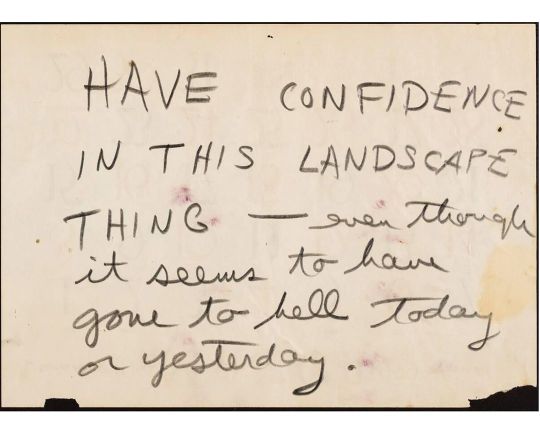
Richard Diebenkorn (American 1922-1993). Untitled 1979. Acrylic, watercolor, and charcoal on paper; 20 1/2 x 29 inches. Source.
At top, one of this artist’s signature moves, leaving visible corrections and deletions that add considerable complexity to the whole. Diebenkorn did not leave behind much in the way of writing about art, but the Richard Diebenkorn Foundation website has a page of “studio notes,” including this humorous pep-talk, scrawled on the back of a calendar page from 1959.
9 notes
·
View notes
Text
Turn of A Potter’s Wheel, A Sonoma Artist Recollects on The Figurative Art Movement of the San Francisco Bay Area
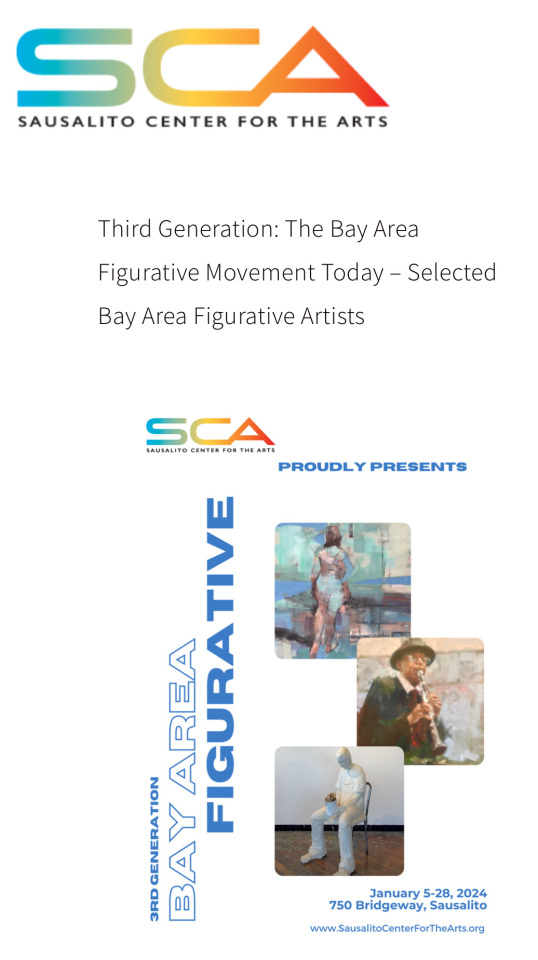
Upon learning about the current exhibit at the Sausalito Center for The Arts (SCA) entitled “Third Generation: The Bay Area Figurative Movement Today,” Sonoma artist and former mayor Larry Murphy was taken aback.
“If I had to spend the rest of my life looking at only one school of art it would be that group of artists,” he said. Murphy recollected his younger days coming of age just as the 1960’s had begun to change the world.
As a San Franciscan he witnessed and experienced the cultural shifts and trends that was redefining post-World War II America. San Francisco and the Bay Area was experiencing a vibrant and diverse energy that had its own style, palate of colors, tastes and even it’s own rock and roll sound.
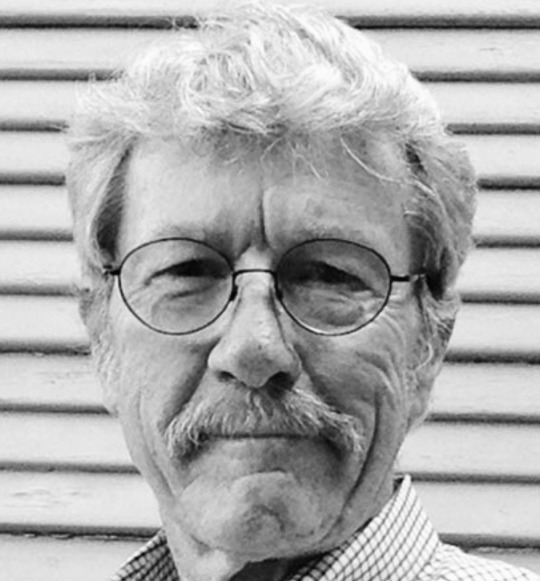
As an artist he was attracted to pottery and watercolor, the San Francisco Art Institute was a hub at the time. Artists and designers from all over the country were coming to the Bay Area to see for themselves what the West Coast was doing.
After World War II everything in terms of culture was focused on America, and the center for art, wasn’t Paris or Amsterdam, it was New York City. Abstract art was a major influence with works by Jackson Pollock and conceptual, minimalist and pop art.
Yet as young people went westward to California for sunshine and “The Summer of Love,” art in the Bay Area was firmly figurative.
Murphy explained, “I studied under Joan Brown, I love Nathan Olivera, Robert Arneson, Wayne Thiebaud, Richard Diebenkorn especially him!” He said. “And Manuel Neri, along with many others.”
Those he mentioned are like a “who’s who” of the Figurative Movement of the Bay Area, especially those artists that would profoundly impact those artists of what the SCA describes as “The Third Generation.”
“To me the most exciting things about these artists, said Murphy is their bold compositions.
“But, especially the way they used thick rich globby paint textures, he added. Murphy who still finds time to paint, exclaimed. “They make me drool!” Suddenly pinpointing a specific recollection he blurted out. “Oh lord, also the brilliant sculptor Stephen deStaebler.”
“And, Also Peter Voulkos,” he said. “Along with Viola Frey, she was another of my teachers,” said Murphy.
Confirming Frey’s work and impact upon the Figurative Movement in the Bay Area, speaking on behalf of the Artist’s Legacy Foundation, Cynthia de Bos said. “Despite Abstract Expressionism’s dominance in the art world at that time, Frey made a conscious decision to embrace figurative art after she saw Richard Diebenkorn’s figurative show at Poindexter Gallery in New York in 1958.”
Serving as the foundation’s Director of Collections and Archives, de Bos also pointed out that, “Frey did indeed embrace the figure from as early as her student years from 1953-56.”
Similarly, especially with the art of Stephen de Staebler, it’s no surprise that as a pottery maker Murphy is an enamored fan. Applauded as a sustainer in the figurative tradition, during the post World War II era, de Staebler was an important figure in the California Clay Movement.
Murphy at the insistence of his wife Rose transferred to California College of The Arts and obtained a Master’s degree in Fine Arts.
This then eventually lead Murphy and Rose with their burgeoning young family to move to the Sonoma Valley. Murphy accepted a teaching position at the prestigious Justin-Siena, and a more settled life for him and Rose began.

After teaching art for more than 15 years, when he retired from Justin-Siena, Murphy became a pub owner in town. He later became Mayor of Sonoma. As the responsibilities of being mayor and pub-owner were stressful, Murphy still managed to keep his artwork going.
An avid fly-fishing enthusiast many of Murphy’s watercolor paintings are of scenes of lakes and streams of those fly-fishing trips. Whereas he described to KQED Perspectives, “to put myself in that beautiful place where nature is mostly untroubled by human intervention.”
Murphy doesn’t do poetry as much anymore. It’s messy and watercolor painting is more portable, he can do anywhere. Even though watercolors seem simple, to master the technique and medium of watercolor painting takes work, focus and patience.
As he used to say to his students, “there’s no such thing as ‘instant art.’ “Pop art often makes that impression. But real true art takes work.”
Reading over the exhibit program at the SCA website, Murphy reiterated the teachers and artists he knew. The Figurative Art Movement of the Bay Area did make an impact, one he remembers with affection and admiration.
“Spectacular stuff in my view, he continued, I have left out dozens of really exciting artists,” he said.
Third Generation: The Bay Area Figurative Movement Today is currently on view at SCA from Jan 5-28th, 2024. A Reception will be held on Saturday, Jan 20th, from 2 to 5pm. Refreshments will be served. For more details, visit the Sausalito Center for The Arts website.
#sonoma#Sausalito Center for The Arts#Figurative Art Movement Bay Area#larry murphy#Catherine Merrill
0 notes
Text
Richard Diebenkorn Foundation
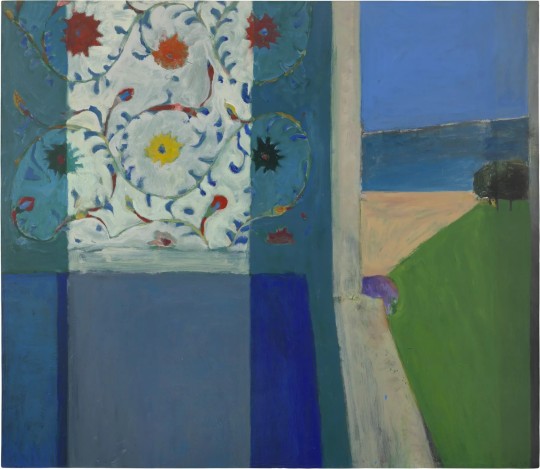
Richard Diebenkorn (American) • Recollections of a Visit to Leningrad • 1965
#art#painting#fine art#art history#richard diebenkorn#lyrical abstraction#american painter#american artist#post-war mofernism#early 20th century art#color block painting
0 notes
Photo

Richard Diebenkorn Foundation
Also: Matisse / Diebenkorn
https://vimeo.com/258474449
46 notes
·
View notes
Photo
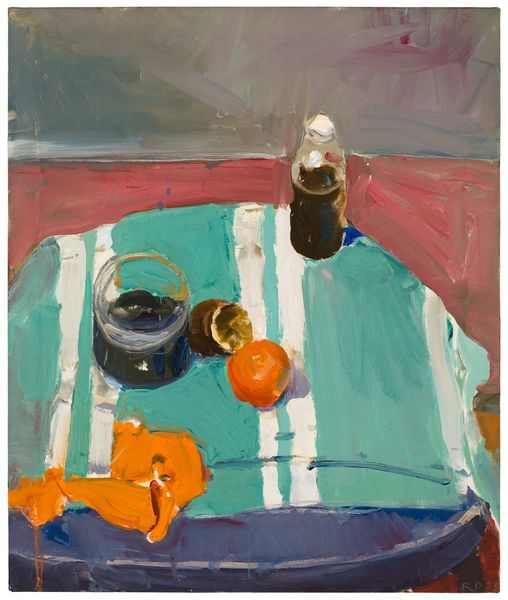
Richard Diebenkorn, Still Life with Orange Peel, 1955;
San Francisco Museum of Modern Art, bequest of Barbara E. Foster; © The Richard Diebenkorn Foundation
"In developing the checklist for the Matisse/Diebenkorn exhibition, my co-curator Katy Rothkopf of The Baltimore Museum of Art and I were eager to include Richard Diebenkorn’s Still Life with Orange Peel (1955). It is one of the first paintings Diebenkorn made when, taking cues from his close friends and fellow artists David Park and Elmer Bischoff, he turned his attention from the Abstract Expressionism of his Berkeley series to subject matter from the world around him. To our minds, it perfectly captured how attuned Diebenkorn was to art history as he forged his own distinctive vocabulary as a painter.
The vibrant picture features objects from the artist’s studio as well as fruit, which Henri Matisse (and Paul Cézanne before him) loved to paint. But in keeping with the American artist’s un-fussy sensibility, Diebenkorn’s loosely painted arrangement is much less composed, almost haphazard. And Diebenkorn almost comically includes not just an orange, but an orange peel, as well as a brown, rotten lemon (both elements he liked so much that he would paint them again). We also loved the quirky view from above and the way that the gorgeous aqua-green and white of the striped fabric—a portion of one of Diebenkorn’s childhood bedspreads—enlivens the painting as textiles do in so many of Matisse’s canvases." continue reading - by Janet Bishop
https://www.sfmoma.org/.../still-life-orange-peel-one.../
9 notes
·
View notes
Text

Richard Diebenkorn (US 1922-1993)
Untitled (c. 1964)
Gouache on paper (32.5 x 27.5 cm)
124 notes
·
View notes
Photo

Richard Diebenkorn, Untitled, (oil, graphite and crayon on paper), 1980 [Private Collection. © the Estate of Richard Diebenkorn. © Richard Diebenkorn Foundation, Berkeley, CA]
126 notes
·
View notes
Photo

Richard Diebenkorn, Green, 1986, color aquatint, spit-bite aquatint, soap-ground aquatint, and drypoint, 53 11/16 x 40 3/4 in. (136.4 x 103.5 cm). Crown Point Press Archive, gift of Crown Point Press, 1991.28.1274. © Richard Diebenkorn Foundation
360 notes
·
View notes
Photo
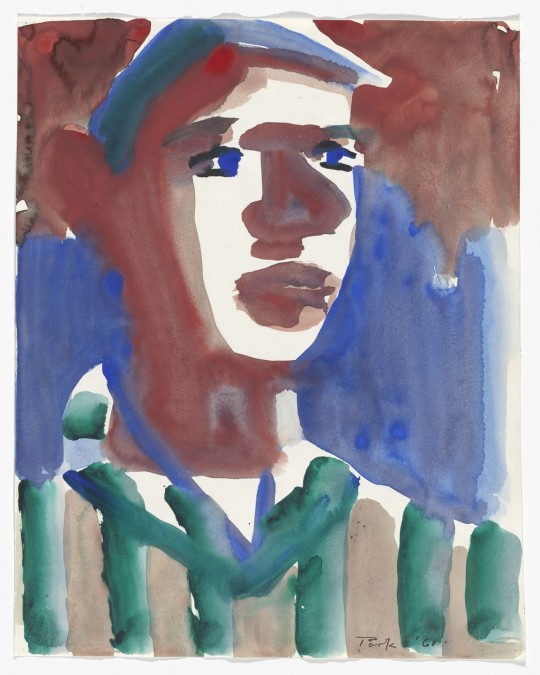
Richard Diebenkorn, David Park, 1960, MoMA: Drawings and Prints
Larry Aldrich Foundation Fund
Size: 14 1/2 x 11 5/8" (37 x 29.6 cm)
Medium: Watercolor on paper
http://www.moma.org/collection/works/33207
3 notes
·
View notes
Text

I forgot what I was going to write about… I had something else in mind, but lost my train of thought when I saw that I had a comment on my previous post. I was giddy at first until I read it: a protective statement from the executive director of The Diebenkorn Foundation. It was annoying because not only did he misunderstand the post (i.e. he doesn’t get the concept of fan art), but he went ahead and insulted my doodle. What a Dick.
Anyhow, today’s master study is my take on Fairfield Porter’s The Livingroom.
1 note
·
View note
Photo

Richard Diebenkorn (1922-1993, American) ~ Recollections of a Visit to Leningrad, 1965
[Source: Richard Diebenkorn Foundation]
3 notes
·
View notes